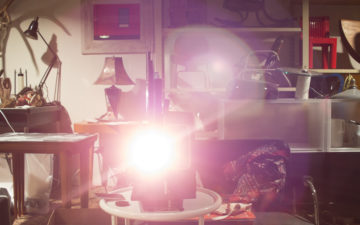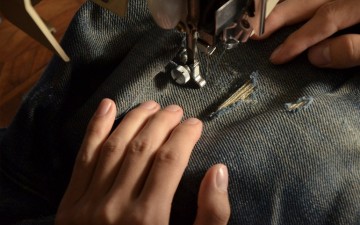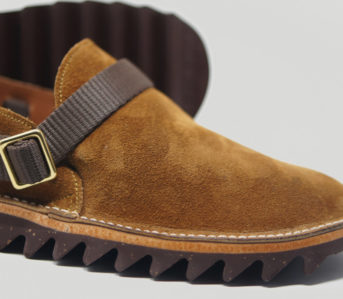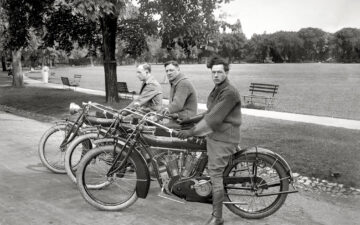Clutch Cafe sits on the corner of Great Portland and Riding House Streets in Central London. It’s an excellent spot for anyone with an appreciation of Americana, premium Japanese brands, or just a decent cup of joe.
All this came to halt though (along with pretty much every other store) with the sudden hiatus of bricks and mortar retail a couple of months ago, when large scale lockdowns came into effect and governments ordered non-essential businesses to shutter in order to reduce the spread of coronavirus.
For the time being, the days of roaming stores like Clutch Cafe, San Francisco’s Self Edge or Seattle’s Division Road to seek out the next workwear gem or just to soak up the vibe are on hold—but for how long? And how will our friends navigate the ‘new normal’ without compromising on the spaces they’ve so carefully designed to inspire our love of heritage?
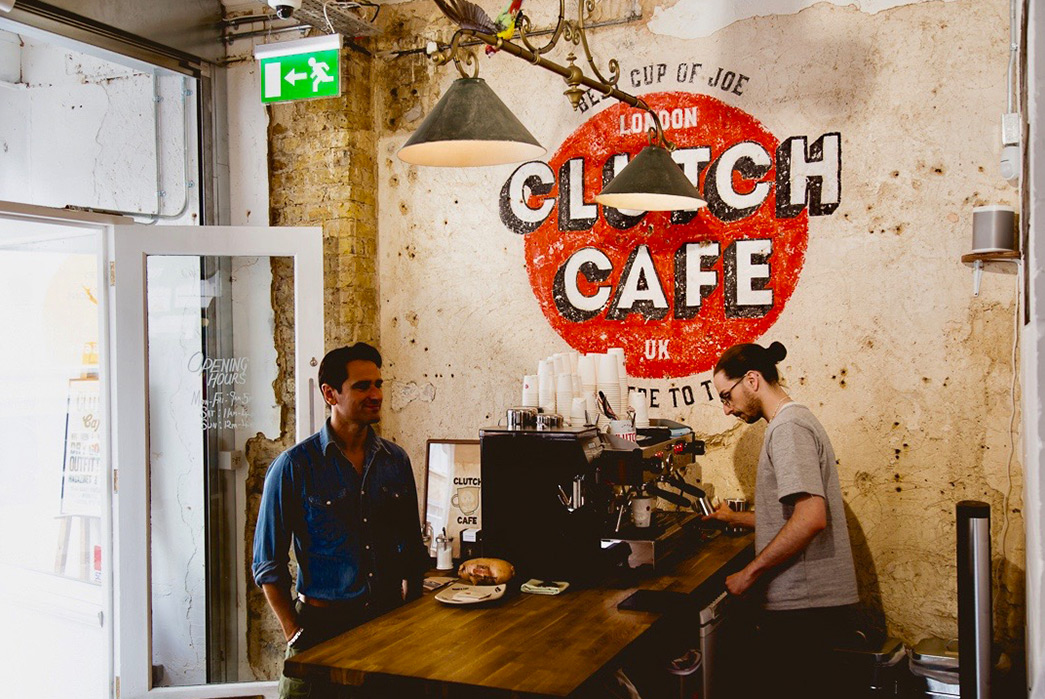
Clutch Cafe’s in-house barista. Image via English Hidden Gems
In the coming weeks, many businesses across Europe, including clothes stores, are poised to slowly and steadily reopen, and a number of states in the US aren’t far behind that timeline.
Some retailers have explicitly laid out their new safety measures while others are staying quiet. But if the language of government-issued guidance has taught us anything these past few months, it’s that clear and direct messaging prevails.
Safety Measures and Digital Strategies
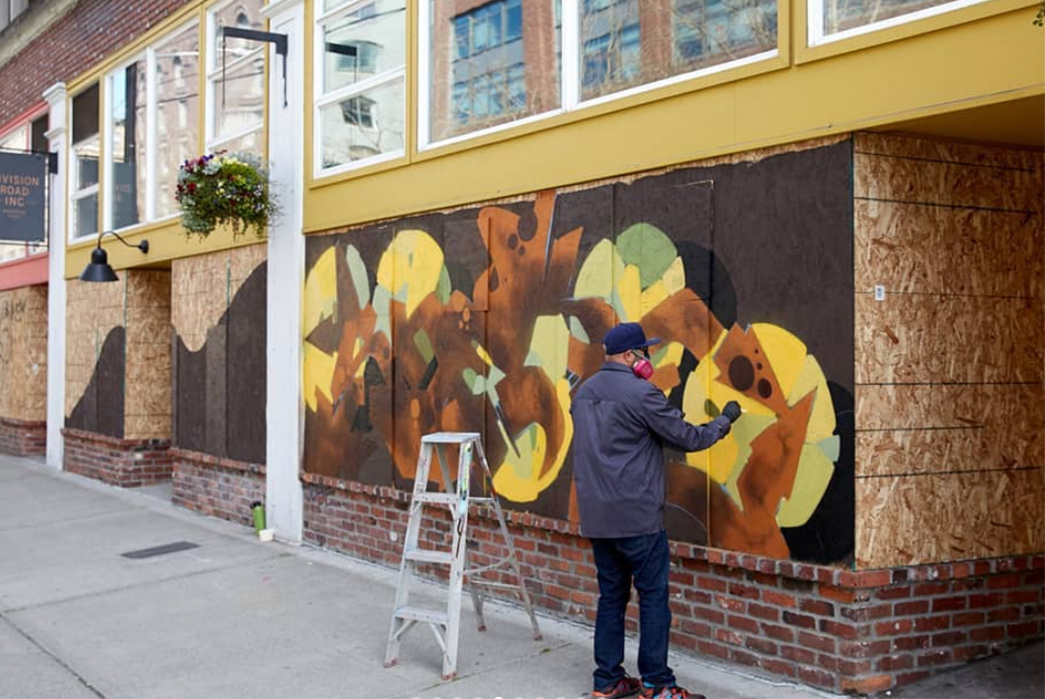
Division Road tapped graffiti artist snekeOne to add color to its shuttered Seattle storefront. Image via Division Road
In addition to implementing disinfecting practices and social distancing among its employees, Division Road has used the closure of its Seattle location as an opportunity to install a Commercial Air Purification System, laying out the science behind its decision in an announcement to reassure customers of its effectiveness.
The brand has also come up with a strategy to reopen its store (in accordance with Washington state timelines) on a by-appointment basis: “we will provide an elevated, personalized shopping experience for each appointment.” Done right, a personalized shopping program is an excellent method to establish a loyal selection of customers and often yields higher transaction values, but it’s unlikely to account for the losses of not having the doors open to everyone.
Corridor NYC’s Dan Snyder agrees—“we’d definitely consider it but I don’t think it’d do very well. The beauty of having a store is that people see beautiful clothes in the window and can just stop in. I feel that most people are comfortable shopping online and I doubt there’d be sufficient demand to warrant keeping the store open.”
During this period of downtime, Dan says, the shop has been focusing on upping its online presence in order to offer an in-store experience digitally, which has seen a positive response from customers.
But digital sales have a hard time measuring up to those in person. Last year, First Insight reported that of all shoppers surveyed, 71% spent more than $50 in a single in-store purchase compared to 51% who spent over the same threshold online.
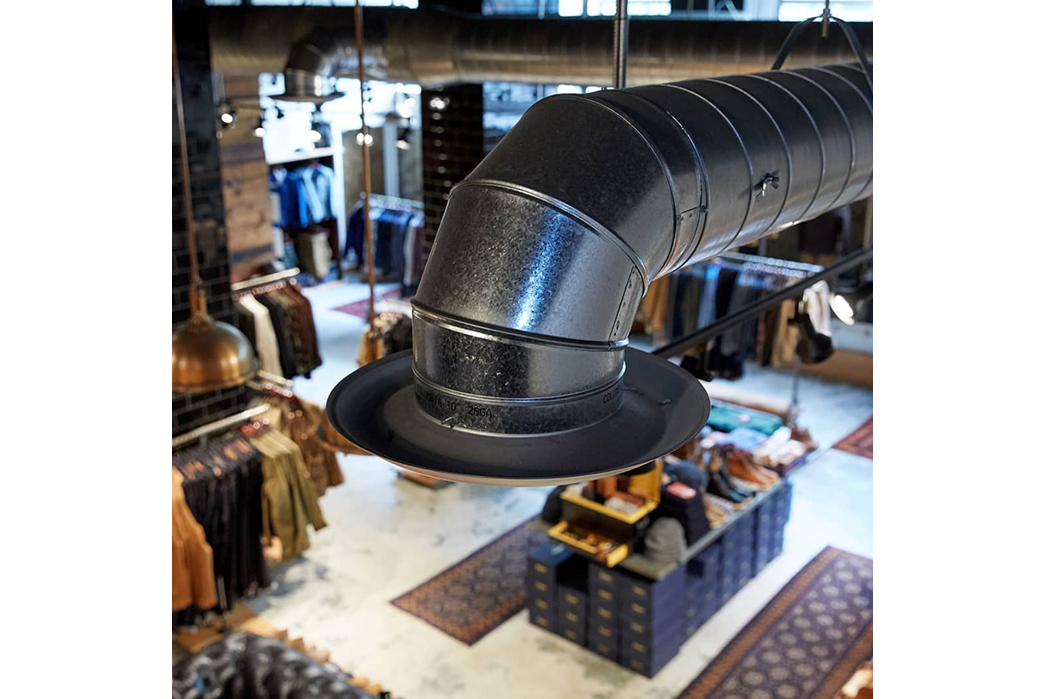
Division Road’s air purification system. Image via Division Road
It’s the same for Clutch Cafe, too. Store manager Ben Chamberlain maintains that offering a personalized and interactive experience is where it’s at. “Being able to move that community online is difficult, but through providing some live Instagram streams for new items coming in-store, answering questions and giving sizing and fit advice one day a week, I think we are reaching out to our customers and followers, giving them the feeling of being at the store and interacting with us… it allows the customer to feel connected to us through these difficult times”.
With Brexit on the horizon, Clutch was already getting its ecommerce and shipping infrastructure in order, and, happily, this has made the sudden transition to online-only retail a lot smoother. Could a by-appointment system work to bridge the transition to safer in-person shopping?
“We will be looking at doing an appointment only opening for customers while running a closed-door policy and skeleton staff to ensure minimum unnecessary contact, as well as possibly offering some Zoom personal shopper appointments to talk through the fabric and fits of items for those people who can’t make it into the store. There are a lot of possibilities,” but what comes first and foremost, Ben says, is ensuring customers feel safe and comfortable, and that the reopening of 78 Great Portland Street comes, “at the right time and in the right manner.”
Elsewhere, Kapital’s Ebisu, Tokyo shop will reopen on the condition that face masks are worn at all times, social distancing is observed and hands are sanitized before entering the building, as well as an imposed limit on customer numbers.
Communicating the New Normal
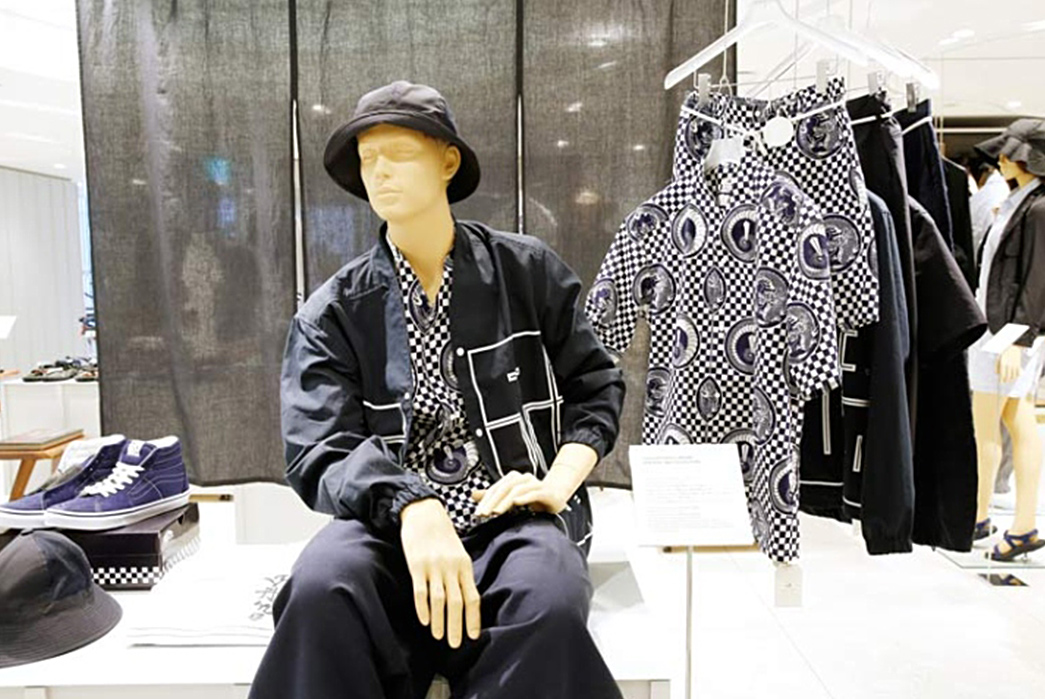
Beams in-store display (image via Retail Design Blog)
These are the general policies that many retailers are adopting around the world, with some also closing changing rooms, no longer offering cosmetics testers, quarantining returned items for several days, and installing protective screens at checkouts.
Of course, there’s no point in promising to enforce social distancing if the store layout doesn’t allow for it, and many have taken a close look at how much space is available for the number of customers they’re accommodating at any one time. To help with this guideline, one-way aisle systems are also being implemented in larger outlets, but without proper signage, this has the potential to cause confusion among customers.
Behind-the-scenes precautions are just as important as customer-facing strategies, and many businesses have spent the last few weeks reconfiguring the layout of offices, workshops and distribution centers to ensure workers can stay two meters apart.
Initiatives such as altering store opening times to discourage employees and customers from traveling during rush hour or staggering shift patterns present an effective way to prevent those from different households from mixing, but only when combined with meticulous cleaning of commonly used surfaces and door handles.
Looking Forward
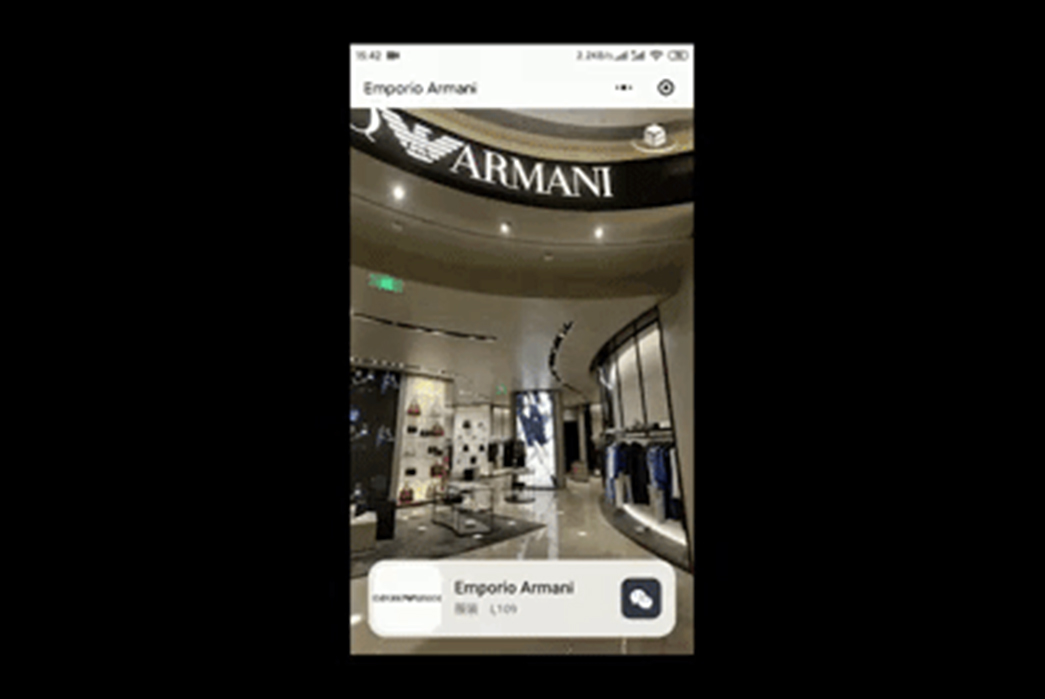
K11 mall’s VR shopping experience. GIF via Abacus
As yet, we don’t have any solid indications about how long safety measures will be in place, but it’s expected that retailers should plan for many of these new policies to become the norm. There is no way to know exactly what will happen in six months, a year or beyond.
It goes without saying that maintaining a strong ecommerce presence and distribution infrastructure has become essential, particularly for smaller businesses that are more susceptible to the impact of lower footfall, although arguably this was a necessity long before the pandemic. And then there are the more complex, but certainly useful concepts such as virtual reality, which has yielded interesting results as a method for evaluating potential new employees and streaming virtual fashion shows.
If customers can’t visit stores in person, perhaps in the future they’ll have options to experience those same spaces through VR, an idea that Chinese mall K11 trialed last month with a 360-degree panorama tour of its location, with brands like Emporio Armani getting involved.
The bottom line is that in every crisis there lies opportunities for innovation, and retailers must now begin to shape new shopping experiences that balance safety with inspiration.

